Weekly Advanced Technologies〔56〕
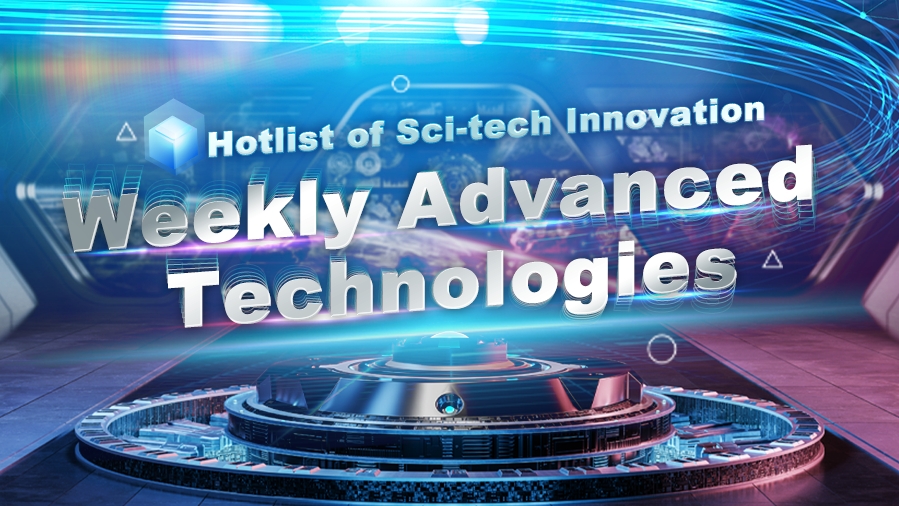
Weekly Advanced Technologies〔56〕| Empowering Enterprises from "data collection" to "data utilization", IoTDB Sets New World Record; Novel Insights into Low-Pressure Preparation of Hydrogen-Rich Superconductive Compounds
The Technology Conference of the International Transaction Processing Performance Council, held on August 30th, unveiled the latest international authoritative database performance benchmark list. Among the highlights, Apache IoTDB, the international open source time series database base software initiated and developed by the School of Software at Tsinghua University, made significant strides. It not only refreshed the Industrial IoT Scenario List (TPCx-IoT) but also secured the top spot in two critical dimensions: performance and cost.
Recently, the research team of JIN Changqing from the Beijing National Laboratory for Condensed Matter Physics has made progress in the ultrahigh-pressure preparation and superconductivity study of new materials with hydrides of main-group nonmetallic elements. For the first time, the team has experimentally synthesized and discovered an antimony-based hydrogen-rich superconductor with a transition temperature as high as 116K. This achievement marks the second highest transition temperature among main-group hydrogen-rich superconductors reported in experimental studies to date. Their research offers new insights for exploring low-pressure preparation methods of hydrogen-rich superconductors.
Based on the weekly diary of technology provided by the daily list of the NCSTI online service platform, we launch the column "Weekly Advanced Technologies" at the hotlist of sci-tech innovation. Today, let's check out No.56.
1. Empowering Enterprises from "data collection" to "data utilization", IoTDB Sets New World Record
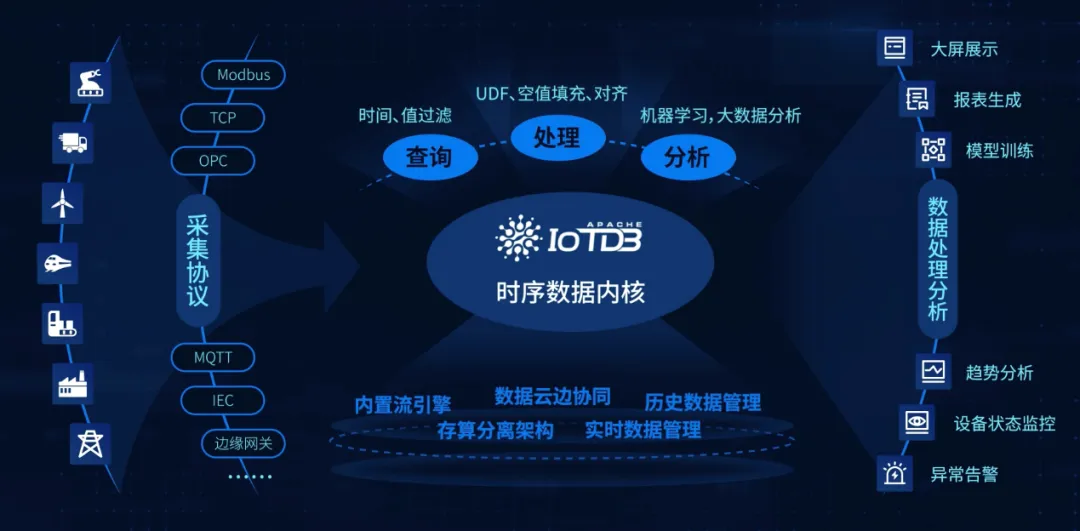
Technical architecture of Apache IoTDB, the software underlying time series databases
The Technology Conference of the International Transaction Processing Performance Council, held on August 30th, unveiled the latest international authoritative database performance benchmark list. Among the highlights, Apache IoTDB, the international open source time series database base software initiated and developed by the School of Software at Tsinghua University, made significant strides. It not only refreshed the Industrial IoT Scenario List (TPCx-IoT) but also secured the top spot in two critical dimensions: performance and cost. Established in 1988, TPC is one of the most authoritative international benchmarking organizations for database performance measurement.
Data serves as the converging point of the digital and physical realms, bridging information technology with operational technology. It is instrumental in reviewing the history and forecasting the future of the industrial Internet of Things, and it is the essential raw material for fostering advanced, intelligent, and eco-friendly industries. Timing databases, as a novel category of industrial software, are tasked with the crucial role of storing, managing, and analyzing the digital footprints of physical quantities gleaned from numerous sensors embedded in industrial equipment. They have emerged as a pivotal infrastructure driving the digital transformation of various industries.
Since 2011, in response to the high-end development needs of China's industrial sector, the team led by Professor WANG Jianmin from the School of Software at Tsinghua University has taken a holistic view of the Industrial Internet of Things (IIoT). They have developed the foundational software for time series databases, IoTDB, which has broken through core technologies such as high data compression, end-to-cloud integration, and large time series models in IIoT scenarios. This software supports the data upload path from end-device collection, edge aggregation, to cloud processing, as well as the model download path from cloud training, edge inference, to end-device execution. It has facilitated the transformation of enterprises from "data collection" to "data utilization". Currently, IoTDB-related technologies and systems have been implemented in thousands of large-scale industrial enterprises globally across industries such as aerospace, energy, and engineering equipment.
2. National Science Review丨Novel Insights into Low-Pressure Preparation of Hydrogen-Rich Superconductive Compounds
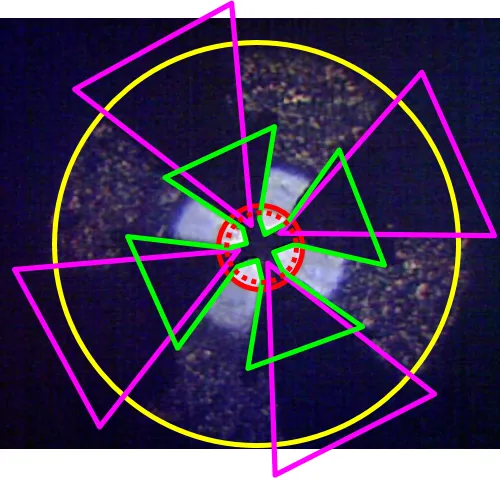
Schematic diagram of the sample and electrode distribution in the high-pressure cavity of the diamond press anvil
In the 1930s, Wigner and colleagues predicted that hydrogen could be transformed into metallic hydrogen under extreme pressures, a state with the potential for high-temperature superconductivity. This hypothesis, however, demanded conditions of intense pressure. Fast forward to the 1970s, Ji-Ann Hsu and her team suggested that hydrogen-rich compounds might lower the pressure required for this metallization process. This concept was further expanded upon by Ashcroft in 2004. More recently, international experiments have validated that hydrogen-rich compounds indeed exhibit high-temperature superconductivity under high pressure conditions.
In a significant advancement, JIN Changqing's research group from the Beijing National Laboratory for Condensed Matter Physics (Institute of Physics, Chinese Academy of Sciences) has made strides in the ultrahigh-pressure synthesis and superconductivity investigation of new materials composed of hydrides of main-group nonmetallic elements. Notably, the team has for the first time experimentally synthesized and identified an antimony-based hydrogen-rich superconductor with a remarkable transition temperature of 116 K. This achievement marks the second highest transition temperature ever recorded for an antimony-based superconductor and stands as the second highest transition temperature among all main-group hydrogen-rich superconductors reported to date.
The team synthesized antimony-based hydrogen-rich compounds under extreme conditions of 184 GPa and 2000 K. Their findings revealed that these compounds exhibited superconductivity at high temperatures. The high-temperature superconductivity was traced back to the hexagonal phase SbH4, which is primarily characterized by Sb-H covalent bonding. For larger H-H distances, the hydrogen atoms can be metallized through orbital hybridization with non-metallic elements, subsequently demonstrating high-temperature superconductivity exceeding 100 K. This discovery offers fresh insights into the exploration of low-pressure preparation methods for superconducting materials in hydrogen-rich compounds.
3. Proc. Natl. Acad. Sci. U. S. A.丨Embracing the DNA Hard Drive Revolution: Are You Ready?
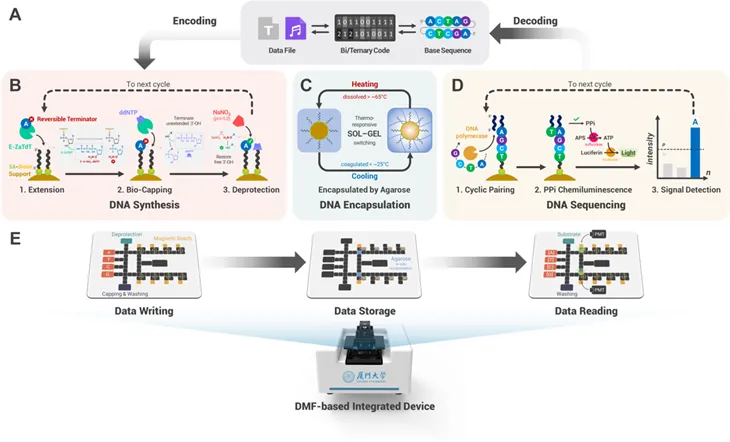
The advent of the digital economy and artificial intelligence has catalyzed an unprecedented surge in global data production. This escalation in the volume of global data is poised to surpass the limits of existing mainstream storage technologies, encompassing magnetic, optical, and solid-state solutions. Consequently, the quest for novel storage media and methodologies has emerged as a pressing imperative.
DNA has risen to prominence as a high-density, long-lasting, and energy-efficient storage solution. The technology is now ready for a full-scale transformation, encompassing the processes of encoding, storing, and decoding information. Yet, the majority of current research hinges on utilizing large-scale commercial DNA services or specialized equipment for data writing and retrieval. This fragmented, non-specialized approach presents several challenges for wider adoption, including high read/write delays stemming from the complexity of automation, significant barriers to entry due to the intricacy and cost of the services or equipment, and heightened information security risks associated with closed-source and distributed processing.
To address the integrated challenge of "writing-storing-reading" in the field of DNA information storage, the team led by YANG Chaoyong at Xiamen University has developed a fully automated DNA information storage solution based on digital microfluidics (DMF), known as the DNA-DISK platform. This innovative platform achieves integration, automation, and miniaturization of the entire DNA information storage process. DNA-DISK is the first to employ single-base enzymatic synthesis technology for information writing, effectively reducing redundancy in information encoding and providing an environmentally friendly and cost-effective method for data writing. It utilizes pyrosequencing technology for on-chip sequencing of DNA, enabling in-situ decoding of information.
In addition, through the heat-responsive gel encapsulation technology, DNA information can be encapsulated in situ on the chip, which not only enhances the portability of the chip, but also prevents the degradation of DNA. The team has designed a desktop instrument to make the DNA information storage operation as convenient as using a USB flash drive, which can complete the whole process of writing, storing and reading information in a variety of general-purpose scenarios.
In order to verify the practicality and effectiveness of the DNA-DISK platform, the team utilized the platform to encode and store the Xiamen University motto "Self-improvement and continuous improvement" as well as the Jasmine Flower sheet music file (228 bits in total, with a read/write latency of 4.4 minutes/bit), and successfully realized the accurate decoding of the information. This achievement not only proves the feasibility of the DNA-DISK platform, but also demonstrates its potential to become a “DNA hard disk” in the future, bringing new ideas for DNA information storage.
4. Nature Communications丨With This "strategic element", Can We Shift the Phage World's Game?
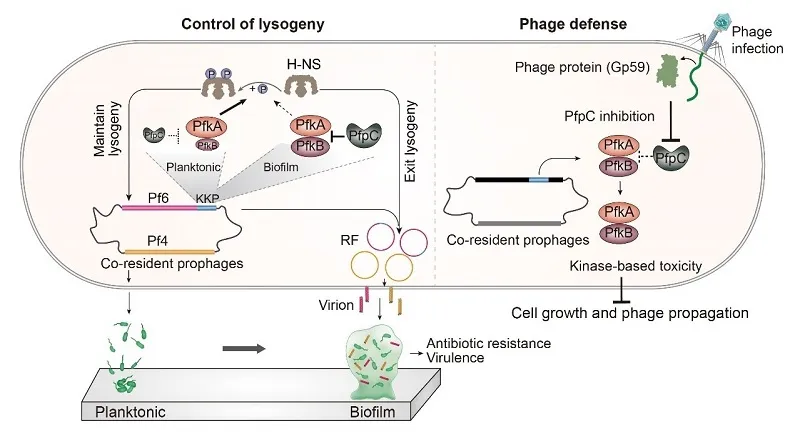
Mechanisms by which KKP controls lysogenic lysis transformation of mild phages and resistance to virulent phage invasion
Within the microbial realm, phages represent a distinctive category of viruses that exclusively target microorganisms, including bacteria, fungi, algae, actinomycetes, and spirochetes. Among these, filamentous phages are particularly prevalent in nature and exhibit the ability to infect both bacterial and archaeal hosts. The intricate interplay between phages and their hosts has long been a focal point in biological research.
Recently, the research team led by WANG Xiaoxue from the Key Laboratory of Tropical Marine Bio-resources and Ecology, Chinese Academy of Sciences, together with Matthew K. Waldor's team at Harvard Medical School, discovered KKP, a three-component toxin-antitoxin system carried by filamentous mild phages in Pseudomonas aeruginosa, and resolved the dual functions of this new system in mild phage lysogenic lysis transformation and phage defense. They also found that the KKP gene cluster is present in more than 1000 different mild prophages.
This research integrates the toxin-antitoxin system into the host-phage interaction model, positioning it as a pivotal switch regulating mild phage lysis and a protective barrier against virulent phage invasion. This system operates through reversible post-translational modifications, situated at the nexus of environmental cues, phage replication, and host physiological responses. Specifically, KKP exemplifies a phosphorylation-based mechanism that activates mild phages and defends against virulent phages, underscoring the toxin-antitoxin system's role as a strategic element in the natural contest between mild and virulent phages.